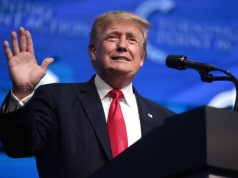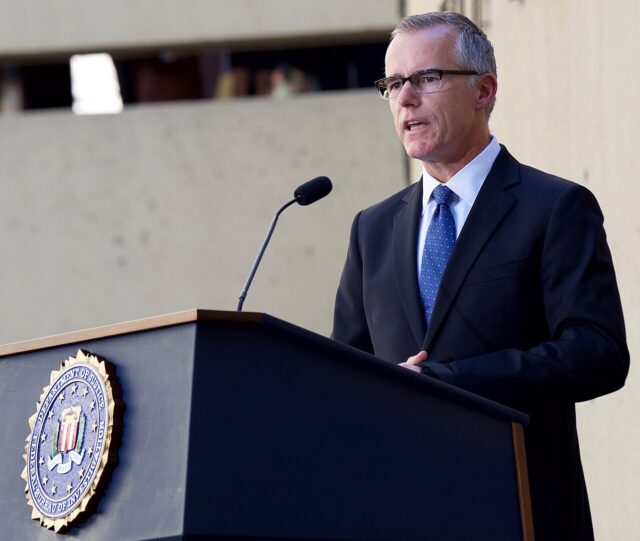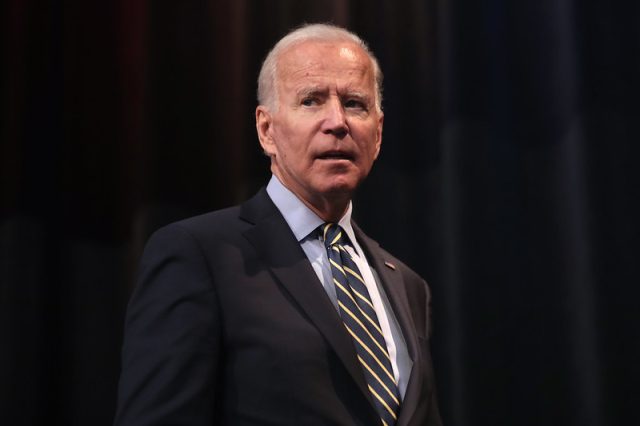George Santos did not stretch the truth. He did not fudge numbers. He did not run afoul of technicalities in campaign finance law. He stole, lied, and exploited vulnerable people for personal and political gain. These were not victimless crimes, nor were they victimless lies. They were part of an elaborate scheme to build a fraudulent political career on a foundation of stolen funds, fictitious wealth, and unearned trust. It is time conservatives stop equivocating. If George Santos were not a thief, he might have been a talented, even promising political figure. But he is a thief, and a spectacularly cynical one at that. He stole from the old and the sick, he stole from donors, he stole from the US taxpayer. He is not a misunderstood maverick or a casualty of overzealous prosecution. He is a con man, and a criminal.
Let us begin, as the law did, with the false image he built. Santos, through deliberate lies to the Federal Election Commission and his own party, fabricated a story of fundraising success. In early 2022, he claimed to have raised over $250,000 in a single quarter from third-party donors, including a personal loan of $500,000 to his own campaign. These were lies. He did not have the money. He did not receive these donations. But this mirage of financial viability was just enough to secure his acceptance into the National Republican Congressional Committee’s “Young Guns” program, granting him financial, logistical, and strategic support. The GOP, believing they were backing a legitimate, self-sustaining candidate, diverted valuable resources to a fraud.
But Santos did not merely fake donor support. He invented donors. Using the identities and financial information of real people, Santos charged their credit cards repeatedly, funneling the proceeds into his campaign, other political committees, and even his own bank account. Nearly a dozen people were victimized, including individuals least capable of defending themselves. One woman, suffering from brain damage, had thousands of dollars withdrawn without her consent. Two elderly men in their eighties, each suffering from dementia, had their identities stolen and their cards charged. These were not passive accounting errors or clerical mistakes. These were acts of intimate, cold exploitation. Santos knew these people, spoke with them, thanked them for their support, and then used their vulnerability against them.
In one egregious instance, a donor who had already given the legal maximum found his credit card charged an additional $15,800 without authorization. Santos disguised this theft by attributing the funds to fabricated family members in his FEC reports, a maneuver that allowed him to continue the ruse while avoiding contribution limits. In another, he charged $12,000 to a donor’s account and deposited the majority into his personal bank. From there, it funded clothing, cosmetics, credit card bills, and gambling trips. The campaign, the candidacy, the public service, all were secondary to a lifestyle of luxury paid for by other people’s money.
Perhaps the most hypocritical of Santos’s frauds involved the pandemic. In 2020, he applied for and received over $24,000 in unemployment benefits from the state of New York. At the time, he was gainfully employed as a regional director at a Florida-based investment firm, earning over $120,000 a year. He did not miss a paycheck. He was not laid off. He did not qualify. And yet, each week, he falsely certified his jobless status, drawing taxpayer-funded aid designed for those hit hardest by COVID-19, the unemployed, the underemployed, the financially desperate. In an act of gall that would be laughable if it were not so despicable, Santos later sponsored legislation in Congress to crack down on pandemic unemployment fraud. The man who stole from the system claimed he would reform it.
Nor did the deception stop there. Santos lied on his congressional financial disclosures, the forms meant to ensure transparency for public officials. He claimed to have earned $750,000 in salary from a private company that paid him nothing. He reported receiving $1 to $5 million in dividends that never existed. He declared hundreds of thousands in bank holdings, when in fact his accounts were often in the low thousands, if not lower. In reality, his only actual income came from the investment firm and the unemployment checks he falsely obtained. The lies were not incidental. They were comprehensive, deliberate, and aimed at creating an illusion of wealth and competence.
Even more brazenly, Santos fabricated an independent expenditure group, a supposed political action committee called RedStone Strategies. He solicited two donors for $25,000 each, promising that the funds would be used for media buys and campaign efforts. They were not. Santos transferred the money into accounts he controlled and spent it on Ferragamo, Hermes, Botox, and credit card bills. This was not merely unethical. It was embezzlement. It was theft. It was a fraud perpetrated with full knowledge and intent.
In total, Santos stole or misappropriated approximately $578,750. The court ordered him to pay $373,749.97 in restitution and to forfeit an additional $205,002.97. These numbers were not speculative. They were calculated against real losses to real people, individuals whose credit was damaged, whose money was siphoned away, whose trust was obliterated. Santos’s 87-month sentence, or just over seven years, was not an outlier in the federal system. It was a typical penalty for this kind of sprawling, malicious financial fraud. Defendants with no political profile, who defrauded the government or private individuals out of hundreds of thousands of dollars, routinely receive similar sentences. That Santos was a congressman did not result in his being singled out. If anything, it spared him scrutiny longer than he deserved.
There is no serious argument for clemency here. Clemency is for excess, for injustice, for punishment that outstrips wrongdoing. Clemency is not for grifters who fake their way into office by stealing from pensioners and pandemic relief funds. One does not defend George Santos by invoking freedom, fairness, or limited government. To the contrary, every dollar Santos stole weakened the legitimacy of our electoral system, diverted support from legitimate candidates, and degraded the moral clarity conservatives must offer in a dishonest age. The true conservative position is to say plainly: this man is a crook.
Yes, Santos was charismatic. Yes, he had a knack for commanding attention. And yes, in another life, with honesty and principle, he might have served well. But we do not excuse embezzlement because the embezzler is clever. We do not overlook theft because the thief is funny. Our movement has spent decades insisting that character matters. If that is still true, then George Santos is not a man to be platformed or pitied. He is a cautionary tale.
Some will argue that Santos’s sentence was harsh. Perhaps. But that is not a reason to pardon him. It is a reason to scrutinize sentencing guidelines for all non-violent financial offenders. Santos should be treated like any other fraudster, no worse, no better. And by that measure, he has been.
Others say we should forgive him because the media was against him. But the media is against every Republican. What makes our side different, or should, is our insistence on personal responsibility. George Santos did what he did. He admitted it. He pled guilty. He is being punished in accordance with the law. He is not a martyr. He is a criminal.
Those who now seek to rebrand Santos as a political prisoner or conservative folk hero are doing damage not only to the movement, but to the truth. And that matters. For if we cannot call theft what it is, if we cannot call fraud what it is, if we cannot reject the normalization of criminality in our own ranks, then we are not a movement of principle. We are just another racket.
If you enjoy my work, please consider subscribing: https://x.com/amuse.
READ NEXT: Unstable Leader Pushes Reckless Nuclear Gamble
















FBI Sued For Records On Collusion With Anti-Trump Group
Americans may soon learn more about how a FBI agent worked with a liberal group to target President Donald Trump in a criminal investigation.
The non-profit public interest law firm Judicial Watch announced in a statement it “filed a Freedom of Information Act (FOIA) lawsuit against the U.S. Department of Justice for communications between former Assistant Special Agent in Charge Timothy Thibault and the anti-Trump organization American Oversight.”
“It’s a shame that we must sue to get these records about how the Biden gang at the FBI and DOJ tried to rig an election by jailing Trump for disputing the 2020 election,” said Judicial Watch President Tom Fitton. “It’s past time for these institutions to focus on transparency under law, so the American people can know the full truth on the lawfare attack perpetrated on Trump.”
Judicial Watch reports it filed the suit in the U.S. District Court for the District of Columbia “after the Federal Bureau of Investigation (FBI) failed to respond to a January 31, 2025, FOIA request for:”
Records and communications between Timothy Thibault, former [Assistant Special Agent in Charge, Washington Field Office] and the non-profit organization American Oversight, 1030 15th St. NW, B255, Washington, D.C. 20005, email domain: @americanoversight. The search terms for this request are a) Trump b) Electors c) Investigation d) election
According to Judicial Watch, “in July 2022, U.S. Senator Chuck Grassley (R-IA) reportedly warned then-Attorney General Merrick Garland that Thibault and an official in the Justice Department’s Public Integrity Section, Richard Pilger, were ‘deeply involved in the decisions to open and pursue election-related investigations against President Trump. At the time, whistleblowers told Grassley that the Thibault-Pilger investigation’s predicating document was based on information from “liberal nonprofit American Oversight.”’ Thibault retired in August 2022.”
Grassley and Sen. Ron Johnson (R-WI) have revealed in a statement that:
Internal FBI emails and predicating documents provided to Grassley and released jointly by the two senators show Timothy Thibault, a former FBI Assistant Special Agent in Charge (ASAC) who was forced to retire from the Bureau after Grassley exposed his public anti-Trump bias, authored the initial language for what ultimately became Jack Smith’s federal case against Trump regarding the 2020 presidential election. Records show Thibault essentially opened and approved his own investigation.
Judicial Watch reports American Oversight describes itself as “founded in 2017 in response to the unprecedented challenges that the Trump administration posed to our nation’s democratic ideals and institutions.…” Earlier this year, Politico described it as, “A left-leaning watchdog group … working to gather materials that could feed Congressional investigations into the Trump administration.”
Sponsored
Senator Kennedy’s Latest Book Strikes Back — Politicians Are Stunned [CONTRIBUTE TODAY TO RECEIVE A FREE COPY]